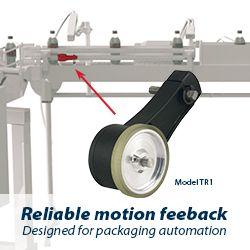Beyond GPS: 5 Next-Generation Technologies for Positioning, Navigation & Timing (PNT)
Penny-sized inertial sensors, pulsed lasers and tracked lightning strikes are among novel approaches to provide precise location-based insights in GPS-denied areas
It is difficult to imagine the modern world without the Global Positioning System (GPS), which provides real-time positioning, navigation and timing (PNT) data for countless military and civilian uses. Thanks in part to early investments that DARPA made to miniaturize GPS technology, GPS today is ubiquitous. Its in cars, boats, planes, trains, smartphones and wristwatches, and has enabled advances as wide-ranging as driverless cars, precision munitions, and automated supply chain management.
As revolutionary as GPS has been, however, it has its limitations. GPS signals cannot be received underground or underwater and can be significantly degraded or unavailable during solar storms. More worrisome is that adversaries can jam signals. GPS continues to be vital, but its limitations in some environments could make it an Achilles heel if warfighters rely on it as their sole source of PNT information. To address this problem, several DARPA programs are exploring innovative technologies and approaches that could eventually provide reliable, highly accurate PNT capabilities when GPS capabilities are degraded or unavailable.
"Position, navigation, and timing are as essential as oxygen for our military operators," said DARPA Director Arati Prabhakar. "Now we are putting new physics, new devices, and new algorithms on the job so our people and our systems can break free of their reliance on GPS."
DARPAs current PNT portfolio includes five programs, focused wholly or in part on PNT-related technology:
*Adaptable Navigation Systems (ANS) is developing new algorithms and architectures for rapid plug-and-play integration of PNT sensors across multiple platforms, with the intent to reduce development costs and shrink deployment time from months to days. ANS aims to create better inertial measurement devices by using cold-atom interferometry, which measures the relative acceleration and rotation of a cloud of atoms stored within a sensor. The goal is to leverage quantum physical properties to create extremely accurate inertial measurement devices that can operate for long periods without needing external data to determine time and position. Additionally, ANS seeks to exploit non-navigational electromagnetic signals--including commercial satellite, radio and television signals and even lightning strikes--to provide additional points of reference for PNT. In combination, these various sources are much more abundant and have stronger signals than GPS, and so could provide position information in both GPS-denied and GPS-degraded environments.
*Microtechnology for Positioning, Navigation, and Timing (Micro-PNT) leverages extreme miniaturization made possible by DARPA-developed micro-electromechanical systems (MEMS) technology. Micro-PNT comprises a portfolio of diverse efforts collectively devoted to develop highly stable and precise chip-scale gyroscopes, clocks and complete integrated timing and inertial measurement devices. DARPA researchers have fabricated a prototype with three gyroscopes, three accelerometers and a highly accurate master clock on a chip that fits easily on the face of a penny. The self-calibrating, high-performance and cost-effective microscale sensors that DARPA is developing could offer tremendous size, weight and power (SWAP) improvements over existing sensors.
*Quantum-Assisted Sensing and Readout (QuASAR) intends to make the worlds most accurate atomic clocks—which currently reside in laboratories—both robust and portable. QuASAR researchers have developed optical atomic clocks in laboratories with a timing error of less than 1 second in 5 billion years. Making clocks this precise portable could improve upon existing military systems such as GPS, and potentially enable entirely new radar, LIDAR and metrology applications.
*The Program in Ultrafast Laser Science and Engineering (PULSE) applies the latest in pulsed laser technology to significantly improve the precision and size of atomic clocks and microwave sources, enabling more accurate time and frequency synchronization over large distances. These capabilities are essential to fully leverage super-accurate atomic clocks, as clocks such as those that QuASAR seeks to build are more precise than our current ability to synchronize between them. If successful, PULSE technology could enable global distribution of time precise enough to take advantage of the worlds most accurate optical atomic clocks.
*The Spatial, Temporal and Orientation Information in Contested Environments (STOIC) program seeks to develop PNT systems that provide GPS-independent PNT with GPS-level timing in a contested environment. STOIC comprises three primary elements that when integrated have the potential to provide global PNT independent of GPS: long-range robust reference signals, ultra-stable tactical clocks, and multifunctional systems that provide PNT information between multiples users.
In time, dependence on GPS may be as unimaginable as is the idea today of living without it.
Featured Product

